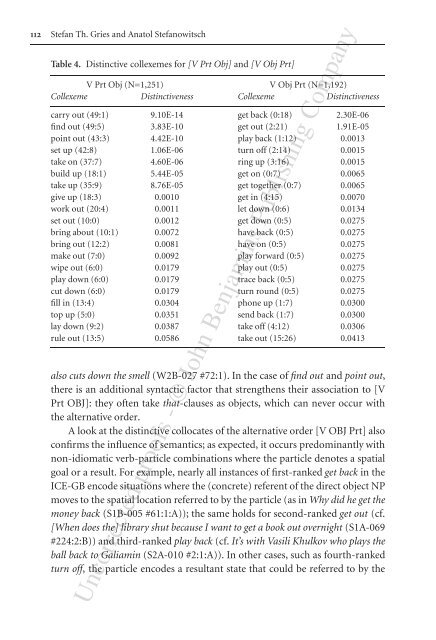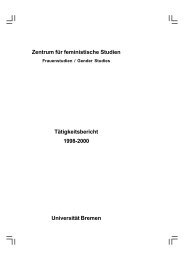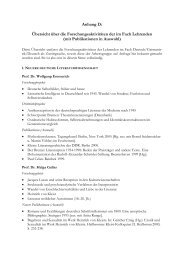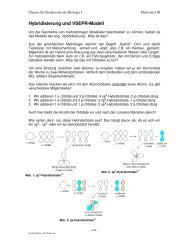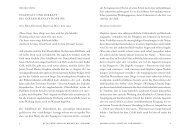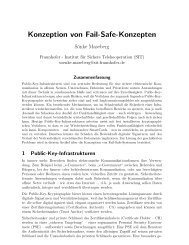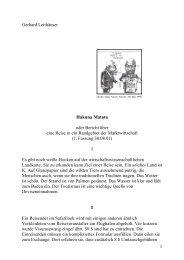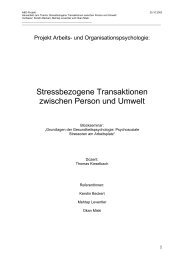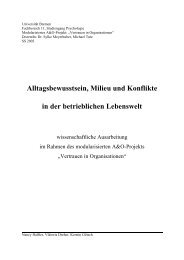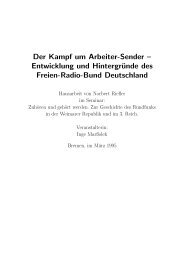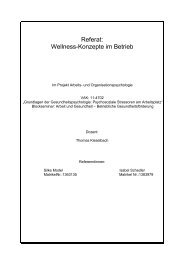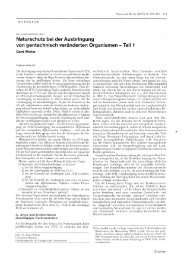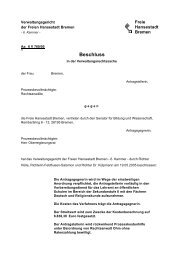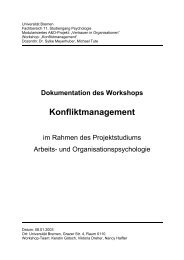Extending collostructional analysis - www-user
Extending collostructional analysis - www-user
Extending collostructional analysis - www-user
Create successful ePaper yourself
Turn your PDF publications into a flip-book with our unique Google optimized e-Paper software.
112 Stefan Th. Gries and Anatol Stefanowitsch<br />
Table 4. Distinctive collexemes for [V Prt Obj] and [V Obj Prt]<br />
V Prt Obj (N=1,251) V Obj Prt (N=1,192)<br />
Collexeme Distinctiveness Collexeme Distinctiveness<br />
carry out (49:1) 9.10E-14 get back (0:18) 2.30E-06<br />
find out (49:5) 3.83E-10 get out (2:21) 1.91E-05<br />
point out (43:3) 4.42E-10 play back (1:12) 0.0013<br />
set up (42:8) 1.06E-06 turn off (2:14) 0.0015<br />
take on (37:7) 4.60E-06 ring up (3:16) 0.0015<br />
build up (18:1) 5.44E-05 get on (0:7) 0.0065<br />
take up (35:9) 8.76E-05 get together (0:7) 0.0065<br />
give up (18:3) 0.0010 get in (4:15) 0.0070<br />
work out (20:4) 0.0011 let down (0:6) 0.0134<br />
set out (10:0) 0.0012 get down (0:5) 0.0275<br />
bring about (10:1) 0.0072 have back (0:5) 0.0275<br />
bring out (12:2) 0.0081 have on (0:5) 0.0275<br />
make out (7:0) 0.0092 play forward (0:5) 0.0275<br />
wipe out (6:0) 0.0179 play out (0:5) 0.0275<br />
play down (6:0) 0.0179 trace back (0:5) 0.0275<br />
cut down (6:0) 0.0179 turn round (0:5) 0.0275<br />
fill in (13:4) 0.0304 phone up (1:7) 0.0300<br />
top up (5:0) 0.0351 send back (1:7) 0.0300<br />
lay down (9:2) 0.0387 take off (4:12) 0.0306<br />
rule out (13:5) 0.0586 take out (15:26) 0.0413<br />
also cuts down the smell (W2B-027 #72:1). In the case of find out and point out,<br />
there is an additional syntactic factor that strengthens their association to [V<br />
Prt OBJ]: they often take that-clauses as objects, which can never occur with<br />
the alternative order.<br />
A look at the distinctive collocates of the alternative order [V OBJ Prt] also<br />
confirms the influence of semantics; as expected, it occurs predominantly with<br />
non-idiomatic verb-particle combinations where the particle denotes a spatial<br />
goal or a result. For example, nearly all instances of first-ranked get back in the<br />
ICE-GB encode situations where the (concrete) referent of the direct object NP<br />
moves to the spatial location referred to by the particle (as in Why did he get the<br />
money back (S1B-005 #61:1:A)); the same holds for second-ranked get out (cf.<br />
[When does the] library shut because I want to get a book out overnight (S1A-069<br />
#224:2:B)) and third-ranked play back (cf. It’s with Vasili Khulkov who plays the<br />
ball back to Galiamin (S2A-010 #2:1:A)). In other cases, such as fourth-ranked<br />
turn off, the particle encodes a resultant state that could be referred to by the<br />
Uncorrected proofs - © John Benjamins Publishing Company


